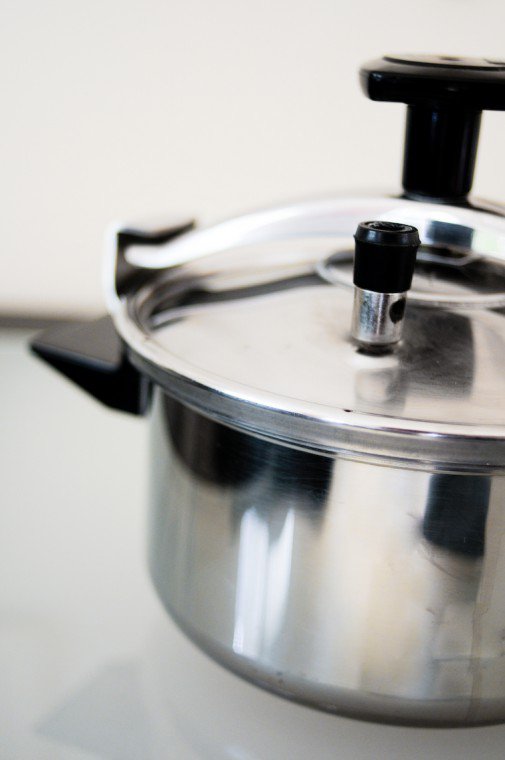
{See below about winning the garlic press to end all garlic presses.}
Over the years, I’ve gone back and forth on this burning issue: is it a good idea to press garlic?
The question sparks surprisingly violent debates, and often there’s an undercurrent of judgment (“real cooks just chop”) that I find out of place in any cooking discussion: there’s no single right way of doing anything, just different skills and circumstances.
As far as I can tell, here are the pros of each method:
Pros of pressing garlic:
– In just a few seconds and a single gesture, you get garlic pulp that you can add to your dish right away.
– If your knife skills aren’t those of a pro, it can be a challenge to get the garlic chopped evenly so it will cook evenly.
– Pressed garlic blends smoothly with other ingredients, which is particularly useful if you use it raw.
– It limits the lingering smell on your fingers, since you can avoid touching the garlic altogether if you prefer.
Pros of chopping by hand:
– It takes more time to clean the average garlic press than a knife and a cutting board, which you would probably have to clean anyway.
– No one-trick pony taking up space in your utensil drawer.
– You have control over how finely or roughly your garlic is cut.
– You use the whole clove, with none wasted in the crevices of the press.
In my own kitchen, I use a bit of both methods, and sometimes I’ll use my Microplane grater, too. I will usually chop my garlic if I’m already chopping other ingredients, but I reach for the garlic press when I’m pressed for time (ha ha), especially if I add the garlic as a second thought when I’m improvising a dish.








